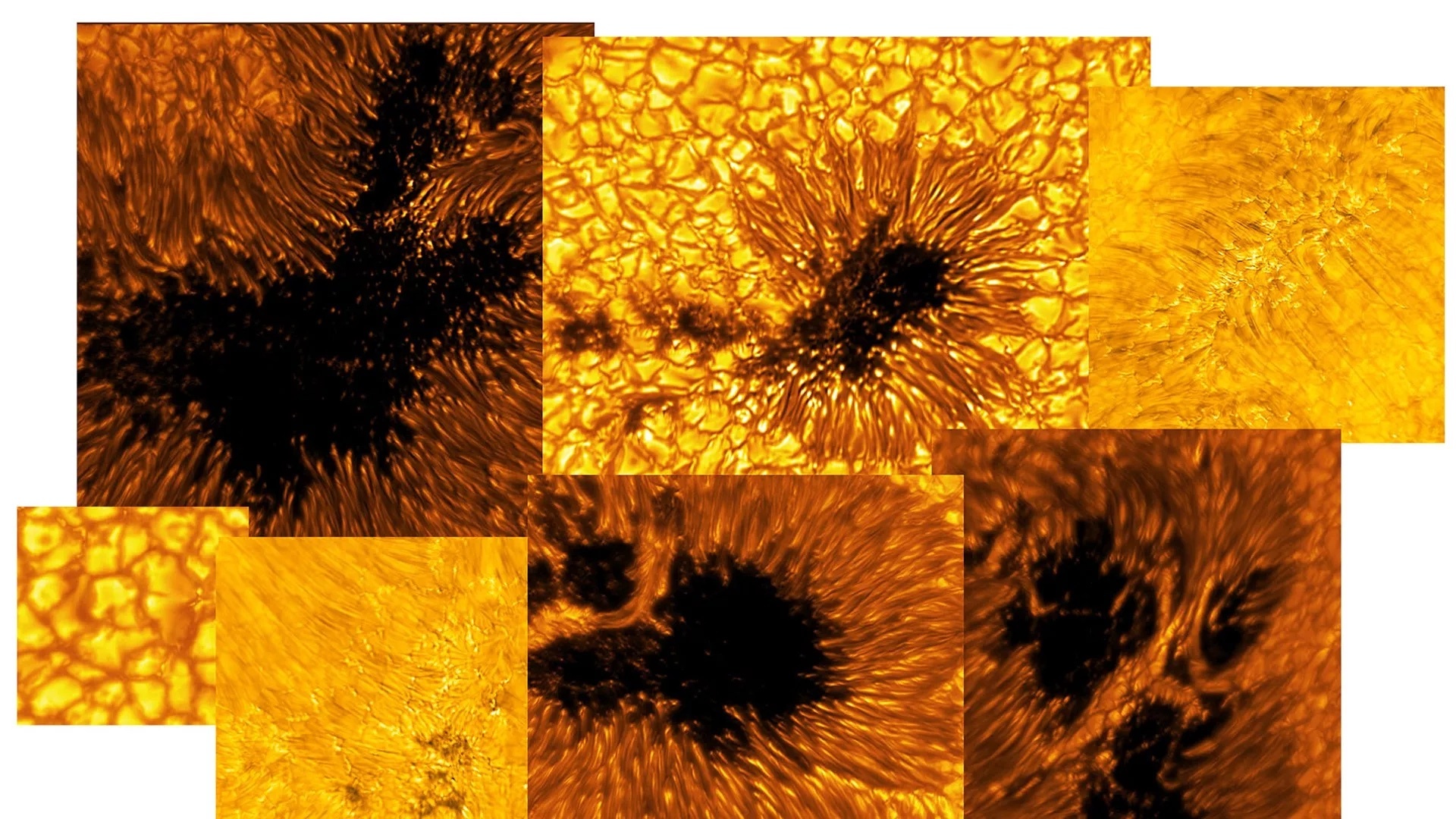24.05.2023
The images capture rare views of decaying sunspots.

This mosaic of new solar images produced by the Inouye Solar Telescope was released on May 19, 2023. The mosaic previews solar data taken during the telescope’s first year of operations during its commissioning phase. Images include sunspots and quiet-sun features. (Image credit: NSF/AURA/NSO)
The world's largest solar telescope has captured fine features on the sun in remarkable detail, including rare glimpses of decaying sunspots.
Perched atop a mountain on the Hawaiian island of Maui, the Daniel K. Inouye Solar Telescope (DKIST) has been eyeing the sun for the past year, collecting high-resolution data about the activity, or lack thereof, in the sun's three-layered atmosphere. Using this data, scientists hope to answer some of the biggest questions about the sun, like why its outer atmosphere, or corona, is much hotter than its visible surface and how its magnetic fields abruptly reshape and blast out powerful jets of plasma from the solar atmosphere.
A newly released DKIST mosaic features granular views of Earth-size sunspots on the "sun's surface," which is really its lowest atmospheric layer called the photosphere. Sunspots are dark, relatively cool patches where strong magnetic fields reside, betraying the homes of future flares and disruptive coronal mass ejections.
Such spots have dark central regions known as umbra where magnetic fields are the strongest. These sunspot centers are surrounded by elongated filamentary regions called penumbra, which are seen in the new images as "bright-headed strands," DKIST team members wrote in an image description published on Friday (May 19).
To capture these images, DKIST used a powerful camera called the Visible-Broadband Imager, which was the first instrument to come online when the telescope became operational and is capable of clicking high-resolution images of the photosphere and the chromosphere. The telescope captured countless "dark, fine threads" in the chromosphere, which are a result of abundant magnetic field activity from below, scientists say.
Sunspots do not exist forever; they last for roughly a week and grow in number and shrink as the sun progresses through its 11-year activity cycle. The latest DKIST images show a sunspot that "will eventually break apart," revealed by a light bridge stretching across a sunspot's umbra.
Numerous umbral fragments are seen near another sunspot, whose presence reveals "a sunspot that's lost its penumbra," DKIST team members wrote in the image description. "It is extraordinarily rare to capture the process of a penumbra forming or decaying."
Quelle: SC
